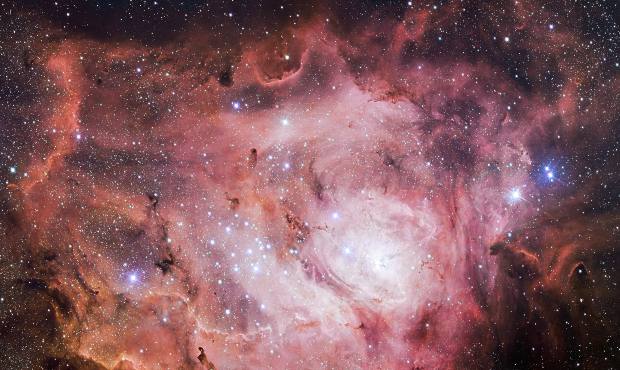June skies will offer amazing sights of moon, Lagoon Nebula
May 26, 2021, 2:00 PM
The midpoint for 2021 is near and the summer offers up some interesting sights for all to see.
With the official opening of the summer holiday season and the return of many of the outdoor vacation locations from our COVID lockdowns, June has some great events for you to view in our Arizona skies.
Hope you had an opportunity to view May’s total lunar eclipse, as we begin with the lunar calendar for June.
June opens up with the moon returning to last quarter on the second. The moon continues to move on as a waning crescent and appears just before the sunrise in the east-northeast sky.
The new moon occurs June 9.
This is simply the best time of the month to view many of the faint sky objects that adorn our Arizona skies. Try to take advantage of this time, as the summer monsoon season is just around the corner and may interfere with the clarity of the skies.
The moon then advances across the night sky as a gibbous moon, until the full strawberry moon on June 24. This amazing moon will ride low in the zodiac sign of Sagittarius the Archer.
The moon will then reach its last quarter phase June 30.
The month of June is also known for a special change of seasons, as the return of the summer solstice on the 20th at 6:32 p.m.
This marks the high point of the sun on the ecliptic path and the longest days of the year.
Here are a few objects to view in our Arizona skies during the dark of the moon – the new moon of June 9.
With a pair of binoculars, look to the south at or near midnight for the brightest part of the Milky Way, in the constellation Sagittarius. To the upper right of Sagittarius is one of the brightest nebulae in the sky. This is the great Lagoon Nebula of M8.
Here is a finder chart.
The Lagoon Nebula is some 4,500 light years from us and an amazing sight in binoculars.
Here is more detailed information on the Lagoon Nebula.
The dark sky show continues with another great object to look at in our June skies!
High up in the east-northeast sky at 10 p.m. is the constellation of Hercules. This is the home to one of the finest globular clusters in the entire night sky.
A globular cluster is a compilation of many thousands of stars all grouped together and are some of the oldest stars in the universe.
This cluster is also known as M13 and was discovered by Edmund Halley in 1714.
Located some 25,000 light years away and about 145 light years in diameter, this is an object which is quite easy to see in binoculars.
Here is a finder chart for M13 in Hercules.
Here is additional information about the globular cluster M13.
There two objects will keep you busy in your sky search.
Now, back to planets that you can see in our June skies!
Just after sunset, turn your attention to the northwest sky. The planet Venus is making a return to the evening skies.
Venus is easy to view with the naked eye and here is a link to help you find it.
Mars is still in the northwest sky after sunset, now moving into the constellation of Cancer. Mars in June is well over 200 million miles from us and the site of the recent U.S. and China rovers. The signals take well over 20 minutes to get to Mars.
Mars will be in solar conjunction Oct. 21.
Finally, the major activity with planets will be in the morning sky.
Look to the southeast sky around 1 a.m. for the giant planets Jupiter and Saturn. They will put on a great show for the entire summer and come to opposition in late July and later in August for Jupiter.
This will be a great summer to view our great Arizona skies.
To print your own monthly star chart, click here.
To view satellites/dates/times of passage, click here.
Listen to the Dr. Sky Show on KTAR News 92.3 FM every Saturday at 3 a.m.









